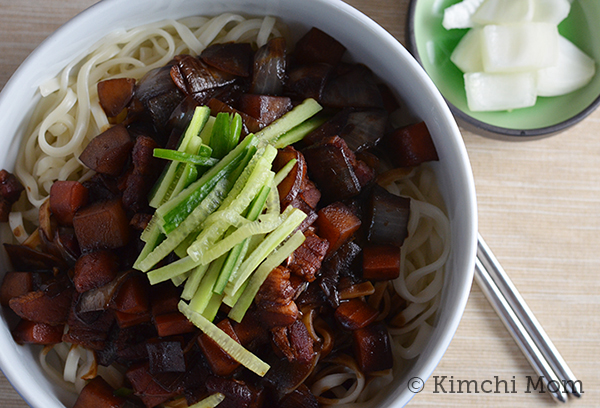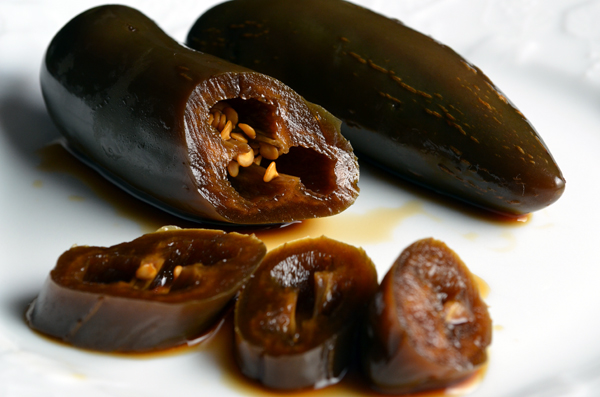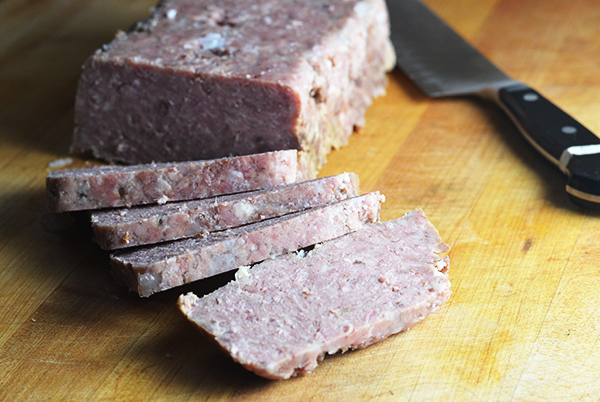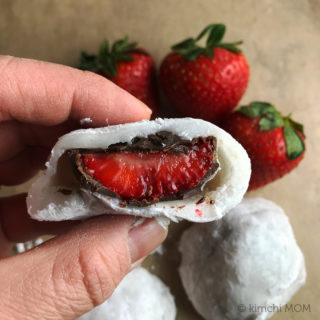The original post can be found as a feature on Steamy Kitchen. I’ve tweaked the recipe slightly and have also included the how-to video here for your viewing enjoyment.
Mak Kimchi
Yields about a gallon
7 lbs of napa cabbage
About 1/3 cup kosher salt
1/2 cup sweet rice flour (Mochiko is a popular brand) *
1 cup water
3/4 cup red pepper powder, medium coarseness
1/4 cup chopped saewoo jjut (salted shrimp) **
4 T. of fish sauce
A scant 1/2 cup sugar
5-7 green onion stalks, chopped
1 oz. ginger (1-inch long, 1-inch diameter piece), minced
8-9 medium garlic cloves, minced
3 medium carrots, julienned
1 medium-sized daikon or 1 small mu (Korean radish), thinly sliced in 2-inch sections
Water
Preparing the sweet rice flour paste:
Whisk together the sweet rice flour and water in a small saucepan. Keep whisking the mixture until bubbles form on the surface. Once this occurs, take the saucepan off the heat and set aside to cool.
Preparing the cabbage:
Discard any wilted or discolored leaves. Starting at the base of the stem, cut the cabbage about one-third of the way down. Then pull apart the cabbage halves to completely separate them. Do the same with the halved portions – cut and pull apart. Repeat for all the cabbage heads. At this point, you can give the quarters a quick rinse under running water and shake off any excess water.
Trim the core at a diagonal. Cut the quarters into 2-inch wide pieces and place in an oversized bowl (I used a 12 qt. bowl) or use a couple of large bowls. Sprinkle generously with salt. Alternate layers of cabbage and salt. Once all the cabbage is cut, give the cabbage a toss and sprinkle more salt on top. Place a weight on top of the cabbage. Two dinner plates works well for me.
Let the salted cabbage sit for at least 3 hours. Don’t worry if you go over (in the video, I let mine sit overnight since I couldn’t tend to it at 3 hours). After 1 hour, give the cabbage another toss.
Preparing the sauce:
While the cabbage is close to being ready, prepare the red pepper sauce. In a medium bowl, mix kochukaru (red pepper flakes), water, saewoo jjut, fish sauce, green onions, sugar, ginger, garlic, rice flour paste, and about a 1/2 cup water. More if needed. Mix thoroughly. Taste. It should be balanced – not too salty, not too fishy, not to spicy and not too sweet. Adjust seasonings at this point. The consistently should be akin to very thick batter. Add a bit more water if necessary. Mix in carrots and radish. Set aside.
Once the cabbage is ready (the volume of the cabbage should have decreased, and it should be a bit wilted), rinse the cabbage under cold running water and let drain in a colander. Once drained, place the cabbage in a large bowl.
At this point you may want to put clean plastic gloves on especially if you have sensitive skin. Add the sauce to the cabbage. Thoroughly mix the sauce and cabbage and make sure every piece of cabbage is coated with the red pepper sauce. Taste. If it needs more salt, add a bit of fish sauce. But you don’t want it to be too salty.
Transfer the cabbage mixture into a large glass jar. Press down on the cabbage as you are filling the jar. Leave about 1-inch of space from the top.
Don’t throw the empty bowl in the sink just yet. Pour in about 1 cup of water into the bowl. Add about a teaspoon of salt to start, and stir. Swirl the water around to make sure you get all the remaining pepper mixture. Taste. Again, you don’t want it too salty – just a hint of salt. Fill the jar with the water until it barely covers the cabbage.
Press down on the cabbage again and make sure the liquid has made its way throughout the jar. Close the lid tightly.
Leave the jars at room temperature*** for about a day away from direct sunlight. I leave mine out for about 24-30 hours. This is when the magic happens. You may want to place the jar in a shallow bowl or plate in case there is leakage.
After those 24 or so excruciating hours, sample the kimchi. There should be a slight tang. At this point it is ready to be refrigerated. You can eat the kimchi right away, but I prefer to wait at least a week to indulge. The kimchi will continue to ferment at a much slower pace in the refrigerator and will keep for about 4 weeks. The kimchi will turn really sour at this point and if you have any left in the jar, it will be perfect for jigae, fried rice, ramen or jun.
Notes:
* In the video I call for twice the amount that I have listed above. The amount listed in this recipe is sufficient OR you can omit altogether! It won’t affect the flavor of the sauce too much.
** If you don’t have saewoo jjut, you can add more fish sauce – about 1/4 to 1/2 cup total for the whole recipe. Add a 1/4 cup to start, taste, and add more to taste as needed.
*** What is “room temperature”? Wikipedia says it’s the temperature indicated by general human comfort, about 68°F to 77°F.








